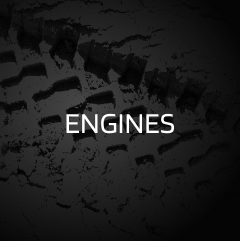 CCA Spares
CCA Spares
Ignition Systems – Sparking the Power Within
As we delve further into the intricacies of internal combustion engines, our focus now shifts to a fundamental component that initiates the combustion process: the ignition system. Join us in unraveling the key elements of ignition systems, understanding their evolution, types, and the critical role they play in igniting the fuel-air mixture.
Evolution of Ignition Systems:
Trace the historical evolution of ignition systems, from the early magneto systems to the advent of electronic ignition. Understand how advancements in technology have improved the reliability and efficiency of ignition processes.
Types of Ignition Systems:
Explore the two primary types of ignition systems:
- Distributor Ignition System (DIS): DIS uses a distributor to route high-voltage current to the spark plugs in a specific firing order.
- Distributorless Ignition System (DIS): DIS eliminates the distributor, utilizing individual coil packs for each spark plug.
Components of Ignition Systems:
Dive into the key components that make up an ignition system:
- Ignition Coil: The ignition coil transforms low-voltage electrical current into a high-voltage spark.
- Spark Plugs: Spark plugs generate the spark needed to ignite the fuel-air mixture in the combustion chamber.
- Ignition Control Module (ICM): The ICM controls the timing of the spark and ensures optimal ignition.
Spark Plug Technologies:
Explore advancements in spark plug technologies, including:
- Iridium and Platinum Plugs: These materials enhance durability and conductivity, extending the lifespan of spark plugs.
- Multi-Electrode Plugs: Plugs with multiple electrodes offer improved combustion efficiency and longevity.
Electronic Ignition Systems:
Electronic ignition systems represent a leap forward in ignition technology. Understand how electronic systems, controlled by the Engine Control Unit (ECU), provide precise timing control for optimal combustion.
Ignition Timing and Advance:
Ignition timing is critical for efficient combustion. Delve into the concepts of initial timing, total timing, and ignition advance, understanding how these factors influence engine performance.
Knock Sensors and Detonation Control:
Modern ignition systems employ knock sensors to detect abnormal combustion, allowing for adjustments to prevent engine damage. Explore how detonation control technologies contribute to improved engine reliability.
Direct Ignition Systems (DIS):
DIS eliminates the need for a distributor, featuring individual coils for each spark plug. Understand the advantages of DIS, including simplified maintenance and enhanced reliability.
Performance Ignition Systems:
In high-performance applications, ignition systems play a crucial role. Explore performance-oriented technologies such as high-energy ignition systems and aftermarket ignition upgrades.
Ignition System Maintenance:
Proper maintenance ensures the longevity and reliability of ignition systems. Learn about routine checks, spark plug replacement intervals, and troubleshooting common ignition system issues.
In conclusion, the ignition system is the spark that ignites the power within an internal combustion engine. This article has provided a comprehensive exploration of its evolution, types, components, and the crucial role it plays in initiating combustion. Stay tuned for the next installment as we continue our journey through the intricate components of internal combustion engines.

